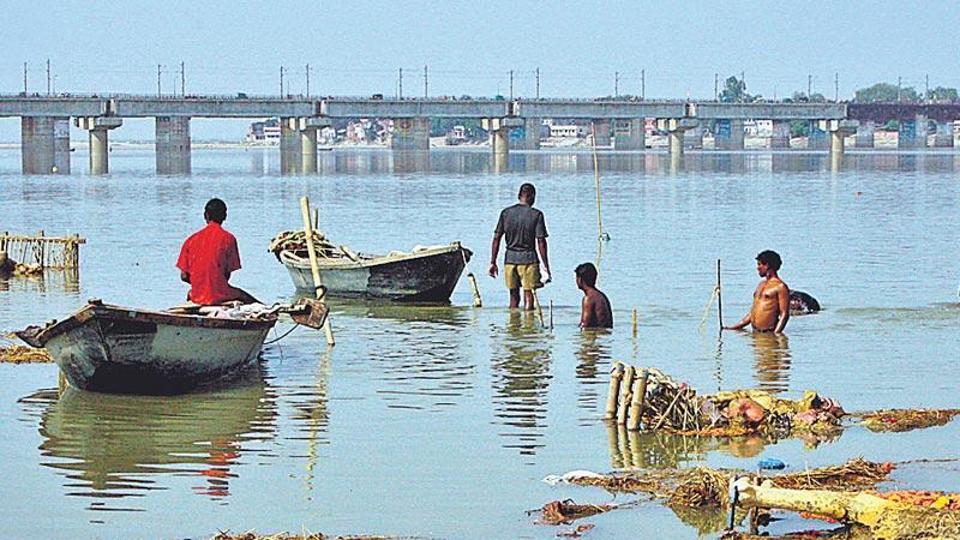The Ganga River is India's holiest and most important river. It starts in the Himalayas and flows through many states, supporting millions of lives.
People use its water for drinking, farming, and daily needs. It is also deeply respected in religion and culture. But today, the Ganga is in trouble. Recent studies show that the river has lost over 50% of its water.
This is a serious issue for both people and nature. Less water means less support for farming, wildlife, and clean drinking water. The river is drying up fast, and we need to understand why.
Climate change, overuse of groundwater, pollution, and the construction of dams are some of the primary reasons. If we don't act soon, the Ganga may not survive. Saving this river is not just about water—it's about saving a lifeline for India.
Why Is the Ganga River Losing Over 50% of Its Water?
New IIT Roorkee study led by Prof. Abhayanand S. Maurya reveals groundwater—not glacial melt—sustains Ganga’s summer flow in the plains. Published in Hydrological Processes, it highlights the need for aquifer recharge & tributary revival.#IITRoorkee #GangaRiver #Hydrology pic.twitter.com/SL40BRNCoJ
— IIT Roorkee (@iitroorkee) August 1, 2025
A new study from IIT Roorkee has unveiled surprising new insights into the Ganga River's hydrology. Led by Professor Abhayanand S. Maurya, the research reveals how the river loses over half its volume each year, a fact that has largely gone unnoticed.
The study, published in the journal Hydrological Processes, found that groundwater, not glacial melt, is the primary source sustaining the Ganga's flow as it crosses the plains.
Challenging the prevailing notion of a widespread groundwater crisis in North India, the team's two decades of field data indicate that the central Ganga Plain's aquifer system is remarkably stable. This is supported by consistent output from thousands of hand pumps.
As the river leaves the Himalayas, its volume increases by almost 120% due to the input of groundwater. However, the research also identified a significant and overlooked threat: more than 58% of the Ganga's water is lost to evaporation during the hot summer months.
What Are the Main Threats to the Survival of India's Holiest River?

Source: HT Times
The main threats to the survival of the Ganga River, India's holiest river, are a complex combination of human activities and environmental changes. Here are the key threats in pointer form:
- Severe Pollution: This is a significant and widely recognised threat.
- Untreated Sewage: Millions of litres of domestic sewage from the hundreds of cities and towns along the river's banks are discharged directly into the Ganga every day.
- Industrial Waste: Factories, including tanneries, chemical plants, and textile mills, release toxic and non-biodegradable waste into the river.
- Agricultural Runoff: Pesticides, fertilisers, and other chemicals used in agriculture are washed into the river, causing eutrophication and harming aquatic life.
- Solid Waste: Unmanaged urban waste, including plastic and other garbage, is a pervasive problem.
- Religious Rituals: While a vital part of the culture, the disposal of spiritual offerings and human cremated remains also contributes to pollution.
- Decreased Water Flow: The river is losing a significant amount of its water.
- Diversion for Agriculture: A vast network of canals diverts a massive volume of water for irrigation, especially in the upper and middle reaches of the river, leaving the downstream areas depleted.
- Groundwater Depletion: Unregulated extraction of groundwater in the Ganga basin reduces the river's base flow.
- Impact of Climate Change: The river's natural hydrology is being disrupted.
- Glacial Retreat: The Himalayan glaciers, the primary source of the Ganga, are melting at an accelerated rate, which will lead to a long-term reduction in the river's perennial flow.
- Erratic Rainfall: Changing monsoon patterns can lead to both severe droughts and devastating floods, both of which stress the river ecosystem.
- Dams and Barrages: The construction of dams and barrages disrupts the natural flow of the river, affects the migration of aquatic life, and contributes to the accumulation of sediment.
- Illegal Sand Mining: Unregulated and unlawful sand mining along the riverbed disrupts the ecosystem, destabilises riverbanks, and contributes to erosion.
Conclusion: Reviving the Sacred Lifeline
The alarming decline of the Ganga's water levels is not just an environmental crisis—it's a cultural and spiritual reckoning.
As the river loses over half its flow annually, the consequences ripple far beyond hydrology, affecting agriculture, biodiversity, and the lives of millions who depend on its waters.
The revelation that groundwater, not glacial melt, sustains the Ganga underscores the urgency of rethinking water management strategies. Pollution, damming, and unchecked urbanisation have fragmented its flow, leaving only a fraction of the river truly free.
To restore the Ganga, India must prioritise ecological conservation, revive its tributaries, and enforce stricter pollution controls. This is not merely about saving a river—it's about preserving a legacy, a lifeline, and a symbol of resilience.
Comments
All Comments (0)
Join the conversation